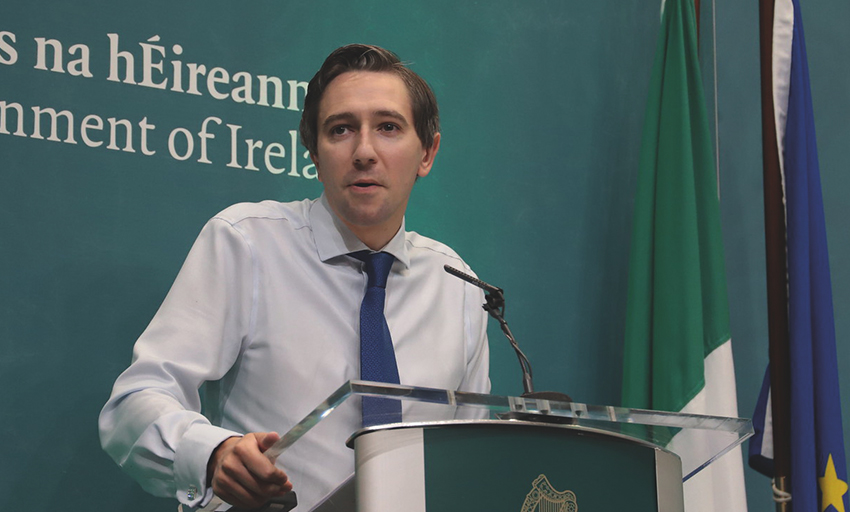Sláintecare success stymied

As the Sláintecare programme nears its fifth year, its implementation has been curtailed by factors such as the Covid-19 pandemic and high-profile resignations, ultimately stymying the project.
Sláintecare was first proposed in 2017 following an Oireachtas report which outlined the need to establish a universal, single-tier healthcare system which can be accessed by all Irish citizens. The principles of the programme were supported by all the main political parties in the Dáil.
The programme has been curtailed by the Covid-19 pandemic, as well as a lack of pace in delivery which culminated in three high-profile resignations from the programme in 2021, including former Executive Director Laura Magahy, who cited frustration at the slow pace of the implementation of the programme.
Anthony O’Connor also resigned from the council in late 2021, stating in a letter to Health Minister Stephen Donnelly TD that the original culture of Sláintecare had been “bulldozed” and that the Government’s replacements were “incongruous” with the principles of the reforms.
Regional health areas
Whilst originally under the remit of the Department of the Taoiseach, in 2022, the Department of Health approved measures to devolve the implementation of Sláintecare into regional health areas.
On 26 October 2022, the Oireachtas Health Committee heard from Leo Kearns, the chair of the Regional Health Areas Advisory Group who suggested that the regional health area delivery process is at risk of being curtailed by the daily workload of senior figures in the HSE and the Department of Health.
“It is difficult to see much real progress being made on implementation unless senior leaders in HSE and Department of Health are freed up from some of their ‘business as usual’ responsibilities to devote significant thought and time to this,” Kearns told the committee.
Meeting in June 2022, the Sláintecare Programme Board set out a target of ensuring the delivery of six regional health areas by the end of the year.
The regional health areas are designed to ensure that there can be a localised response per each of the six areas. However, differing local responses are not a guaranteed success, and there is the potential for there to be a lack of a consistent strategy to underpin developments in the healthcare system throughout the State.

Budget 2023
The Sláintecare Implementation Strategy 2021-2023 outlines a vision for healthcare and immediate actions which are consistent with the original Sláintecare report. The implementation strategy’s foreword, written by the former Executive Director Laura Magahy, reiterates a commitment to the vision of a universal single tier healthcare system.
Budget 2023 allocated a record amount (€23.4 billion) in funding to the heath service. However, this is mostly targeted at reducing waiting times within the existing HSE framework, rather than a fundamental reform of the healthcare system.
In his statement on the budget, Health Minister Stephen Donnelly TD made no mention of Sláintecare, and it is unclear specifically how much of the funding in the health budget will be for supporting the reforms as part of the project.
The budget did allocate funds with the aim of eliminating inpatient charges, with the aim of saving patients up to €800 per year. However, the inequality in health outcomes for people who rely on the HSE, compared with those who have access to private healthcare remain significant. The median treatment response time in private healthcare is five days, compared to a 17-day median wait with the HSE.
Health outcomes
This is underpinned by an increasing trend in the number of Irish citizens who access private healthcare, with most reporting a higher satisfaction level than those who use the HSE. This suggests that those who can afford to seek private healthcare are doing so amid a perception that the HSE cannot adequately meet their needs.
Figures on health outcomes in Ireland are generally strong, with Ireland recording the highest self-perceived health outcomes in the EU, with 83 per cent stating that they were in good health. However, figures from the Department of Health relating to health outcomes in the State in 2021 reveal that Ireland has a lower doctor-to-patient ratio than both the EU average and the OECD average.
The Department of Health’s Statement of Strategy 2021-2023 does state that one of its five strategic priorities is making access to healthcare fairer and faster, citing the principles of Sláintecare as the means to achieve this.
The percentage of the population who hold a medical card, as of 2020, remains below the figure for 2009, despite 2020 being three years after the launch of the strategy, the stated aim of which is to work towards a universal healthcare model.
Whilst measures have successfully been taken under the aegis of Sláintecare, such as the Sláintecare Integration Fund, which piloted 105 of the 123 intended projects throughout the HSE in 2021, the bigger picture of delivering a universal healthcare system has fallen down the list of priorities for the Government.





